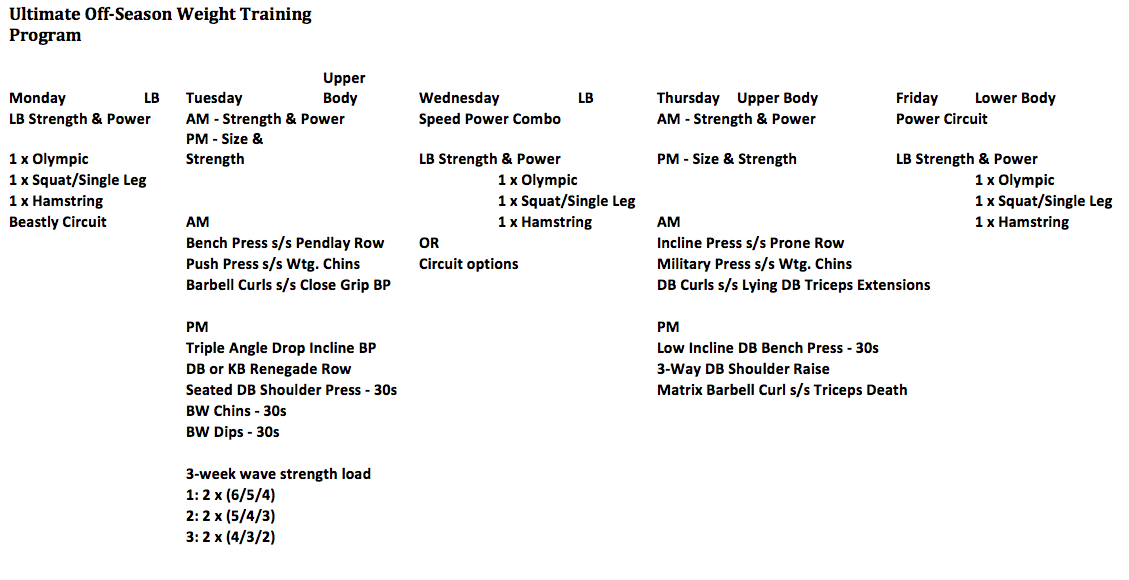
Recently, I decided to re-read a few of the classics of our industry and thought if there was a way to combine the best of the best into a Grand Unified Theory of Everything. This idea is taken from physics and is explained by Wikipedia as:
“A theory of everything (TOEor ToE), final theory, ultimate theory, or master theory is a hypothetical single, all-encompassing, coherent theoretical framework of physics that fully explains and links together all physical aspects of the universe. Finding a TOE is one of the major unsolved problems in physics. Over the past few centuries, two theoretical frameworks have been developed that, as a whole, most closely resemble a TOE. These two theories upon which all modern physics rests are general relativity (GR) and quantum field theory (QFT). GR is a theoretical framework that only focuses on gravity for understanding the universe in regions of both large scale and high mass: stars, galaxies, clusters of galaxies, etc. On the other hand, QFT is a theoretical framework that only focuses on three non-gravitational forces for understanding the universe in regions of both small scale and low mass: sub-atomic particles, atoms, molecules, etc. QFT successfully implemented the Standard Model and unified the interactions (so-called Grand Unified Theory) between the three non-gravitational forces: strong, weak, and electromagnetic force.”
I have tried to develop this type of unification programming earlier, “Unification of Training Stimuli (with Program)” published here at elitefts.com on July 27, 2016. This attempt was in unifying the four different weight training sports, powerlifting, weightlifting, strongman, and bodybuilding, into an overall training plan for rugby. This time I want to delve deeper into the framework or the elements that make up the programming of these four sports and how we can program them into a usable athletic development plan.
RECENT: Are You Ready for the Inevitable?
Many years ago, I co-authored an article on weight training programming for rugby with Damian Marsh in which we stated that:
Some days I feel like John Nash (A Brilliant Mind), searching for that “one original thought” that changes the way people look at a particular problem. To develop a system of programming that is “profound in its simplicity” and remove the “complicate to profit” (Peter Harding) mentality that seems to have pervaded many “experts'” ideas.
Firstly, here are some thoughts that have inspired me along the path to write this particular piece, all from the mind of Louie Simmons:
- “Strength training is the overcoming of weaknesses;”
- “The development of force is about mathematics, physics, and biomechanics;” and
- “Whatever you don’t train, you lose.”
In the sport of rugby, where I spend most of my programming and coaching time, there are elements of all types of strength in the on-field performance. But often when you view training programs that only cater to hypertrophy or maximal strength or some system of modified Olympic lifting, the question that often gets lost in the debate as to which is the best method to use is, “What do players need to do in the weight room in order to be better on the field?” This is why we believe in focusing on the “Big Rocks” first and foremost. These need to be in place before anything else in your program could be considered a “like to do” or “nice to do.” These Big Rocks form the core foundational platform on which physical performance is based:
1. Speed and Power (Neural focus)
2. Strength and Size (Mechanical focus)
3. Aerobic and Anaerobic mix (Metabolic focus)
Also back in 2001, I had an article published by Ironmind in their wonderful Milo magazine (Vol 9. No. 3) in which I outlined the beginnings of my current thinking, which I termed then, Kairkkido, a made-up Japanese word with my intended meaning of “The Way of Super Human Strength,” utilizing the following exercise categories in programming:
- Total Body (e.g., clean, snatch, deadlift)
- Squat (e.g., front, single leg, overhead)
- Hamstring/Lower Back (e.g., reverse hypers, glute ham raise)
- Upper Body Pull (e.g., chins, rows)
- Upper Body Push (e.g., bench press, military)
- Gymnastic (e.g., hand balancing, dips)
- Abdominal (e.g., Swiss ball movements, bracing)
- Bodybuilding (e.g., single joint isolation muscle movements)
- Prehabilitation/Rehabilitation (e.g., rotator cuff, grip)
Other coaches, with whom I have spoken and exchanged programs, have attempted to spread the various types of stressors across the exercise week, for example:
- Monday — Olympic lifting variants (speed based)
- Wednesday — Powerlifting variants (maximal force)
- Friday — Bodybuilding and strongman options (size and endurance)
This got me thinking of how to include the key elements of the following methods into a Theory of Everything, in effect as Tolkien wrote, “One ring to rule them all.” I have always believed that ideally, you should move from high neural to metabolic over the course of the training week. I think that idea was from a lecture that Charles Poliquin gave in Sydney back in 1988. With this in mind then, I would load the start of the week with the higher velocity lifting and finish the week with hypertrophy and strength endurance style of training. The theory I am proposing takes into consideration the following aspects of strength and related programming ideas.
RELATED: Implementing Self-Determination Theory in Coaching
Types of Strength
- Speed strength
- Strength speed
- Maximal strength
- Strength endurance
Westside Training
- Dynamic effort day (velocity /power)
- Maximal effort day (maximal strength)
- Repetition method (hypertrophy/localized muscle endurance)
Triphasic
- Isometric
- Eccentric
- Concentric
Force-Velocity Curve training programming utilizing Velocity Based Training
Strongman/Dinosaur Training
Dan John’s Big 5 Movement, which has formed the basis of my Simplicity Programming, as outlined in numerous articles at elitefts.com. His movement categories and an example of exercises within these categories are listed below:
Below is an early attempt at developing an off-/pre-season weekly weight training program to ensure all my player groupings received an appropriate stimulus in training to improve in specific areas. Please note that all players did not do all sessions. The player groupings were done on the basis of need and were focused on three distinct areas: Speed and Power; Strength and Size; and Metabolic Fitness and Strength.
The above program certainly filled the needs of the playing group, and I certainly would not hesitate to use this again in the future or recommend that other teams trial it with their playing groups. I wanted to delve deeper into the successful styles of programming and the methods employed to achieve results over extended periods of time, hence my rationale behind this article and project. Maybe I have moved away from my simplicity and over-complicated the issue of programming, but I felt a divergence to uncover the truth in systematic program development was worth the detour.
These are the training days and exercise categories that I am proposing for this amalgam of training variations over the week plan. I have come to favor the three-day a week protocol of full body training since I believe players need a greater stimulus of three sessions a week at this stage of the year. If you favor a four-day a week split programming style then, by all means, adjust what you read below accordingly. You could actually do two times full body and two times split if you wish; it is all about needs-based training and what will best stimulate your players.
I am sure there will be extended debate about where certain movements may fit in the category chart; that is actually my intent as well to discuss and learn from each other in this programming process. Please, by all means, write in your comments and suggestions and ideas. Below are my suggested exercise category charts and a week program example for you to develop as your own.
I would like to thank the great minds that have stimulated my thoughts, any errors of judgment are completely my own. In no order of importance or relevance, they are: Louie Simmons, Alex Natera, Frans Bosch, Cal Dietz, Paul Comfort, Dan John, Charles Poliquin, Christian Thibadeau, Gilles Cometti, Reg Park, Ian King, Damian Marsh, Jim Wendler, and countless others. THANK YOU ALL!
I urge you to re-read the books mentioned in the early part of this article and the works of the people mentioned above and to become a member of the Conjugate Club from Westside Barbell, where you will get some tremendous programming insights into the manipulation of variables to achieve specific results, like this example from a morning workout listed recently:
Main Lift:
- Straight Bar Floor Press 1RM
- Straight Bar Isometric Pin Press 5x5@4 seconds
- Max Rep Heavy Dumbbell Bench
To conclude, I want to share with you a wonderful quote by Loren Seagrave, “Educate people, train animals,” since coaching is an extension of teaching, I could not agree more.
Exercise Categories
Day 1: VBT >0.75 m/second, Dynamic Effort, bottom 2/3 of the FV curve
Day 2: VBT 0.25 – 0.75 m/second, Max Effort, Isometrics, Eccentrics, top 1/3 of the FV curve, use Prilepin’s Table
Day 3: Muscular Endurance, Hypertrophy, Strongman, Circuits, Repetition Methods, Time Under Tension, Reps >6
CARE program at the conclusion of each training day, mix & match but must get any option twice a week.
In the past, many of my category-based programming articles and examples have just been limited to exercise selection. Whilst this has certainly been of an advantage to most players, it does not give an indication of how to achieve certain goals. Also in discussion with Damian Marsh, who steered me into calmer waters in regards to the chart above, when saying that all exercises could possibly be in multiple categories, so methods may be of more importance. Hence why I have attempted to allocate specific methods that I feel are best suited in some categories. The list is far from exclusive or exhaustive, and I welcome your thoughts and ideas on improvement.
Program Example Snapshot
Monday
- Push Press 8 x 3 @ 0.1 m/second
- 6 x 10m Sprint, Chain Box Squat (3 reps), Trap Bar Jump Shrugs (6 reps)
- 6 x Band Bench Press (3 reps), Medicine Ball Drops (6 reps), Bench Pull (6 reps)
- Individual CARE program (e.g., Nordics, Petersen Step-Ups, Cuban Press, Banded Crab Walk, L/R Lateral Neck Bridge Against Wall (iso))
Wednesday
- Prowler Push 6 x 15m
- Front Squat 8 x 3 with 3-second iso holds at the ¼, ½ & ¾ squat positions, move the concentric as fast as possible
- Weight Release Bench Press 8 x 3
- Bent Over Row s/s Military Press 5 x 5
- Individual CARE program (e.g., Negative-Accentuated Standing Calf Raise (2 up, 1 down), Single Leg Back Extension with Iso Hold, Copenhagen Plank, Single Leg Squat to Box, Bottom Up Press with Kettlebell)
Friday
- Strongman Medley
- Farmer's Walk, Cross Carry Walk, Tire Flip, Viking Press, Hand-Over-Hand Pull (all for 30 seconds with 15 seconds transition; 90 seconds between sets) x 5
- Peripheral Heart Action Circuit of 4 Exercises: Upper Body Push, Upper Body Pull, Squat, Hinge, Core, or Carry 12, 10, 8, 12
- Individual Specific Hypertrophy work (e.g., 3 sets x Triple Drop Bench Press, 5 /5/5 s/s Mechanical Advantage Chins —wide, pronated, neutral, close, supinated— 5/5/5, 4 sets x Front Squat into Back Squat, 6 reps with front squat then immediately move into back squat for 6 more reps)
- Individual CARE program (e.g., Neck Iso Plank in Prone and Supine, Landmine Eccentric Romanian Deadlift (2 up, 1 down), Banded Face Pull with External Rotation, Single Leg Calf Raises, Dumbbell L-Raises)
















I hope you are well and you dont mind me emailing. I am a long time reader and used your ideas when I was training for football / soccer several years ago.
I am going to start playing rugby next year and immediately thought of you. I was hoping you could help me design a program?
I am 33yo, 6'2, 235lbs (27% bodyfat) and have been sitting behind a desk for the last 10 years. I was a goalkeeper at a high level during uni, but have been convinced now to join a rugby club. I have about a year to prepare, and have been told I'm well suited to #6.
Would you be able to help me design a 1 year plan? My cardio is shit but probably bc of my fat levels. Seems like my priorities should be fat loss and then muscle gain / strength and then a few weeks of cardio pre preseason.
My strength levels are poor as I haven't focused on it for a while: 200 bench, 225 squat, 300 dead.
Any help would be much appreciated!
Thanks
Jon
I realize this article is over a year old, but I was hoping to get in touch with you. I'm in a similar boat as Jon above. I'm a former college soccer player (forward) and competitive olympic power lifter. I'm 38 yo, 5'1, 165lbs. I competed in the 119lb class and was 125lbs in college.
While I competed in power lifting I had a 240lb bench and 200lb clean and jerk. After college I got into bodybuilding and gained a good amount of mass and because of the type of single joint movements I was doing I lost a lot of athleticism. The last time I had a consistent routine was in 2012. I've been in and out of lifting for the past 8 years. I just started lifting again about 4 weeks ago. I'm over weight. My cardio and muscular endurance is horrible. My max bench is 225lbs. Squat 315 lbs and Dead lift is unknown, but I'm sure its probably around 365lb.
The main reason I'm reaching out is because I'm not getting any younger so I've been researching different workout methods that would be beneficial for my body type and goals. Something I could sustain for years to come. I'm not training for anything sports specific (as of yet). What I'm looking for is strength at the lowest body weight possible, speed/agility. I would like to have good body weight strength as well. I've thought about combining power lifting with body weight exercises instead of accessory exercises. I'm just not sure which direction to go?
Do you have any insight? Would you be willing to work with me on developing a program.
Thanks
Craig